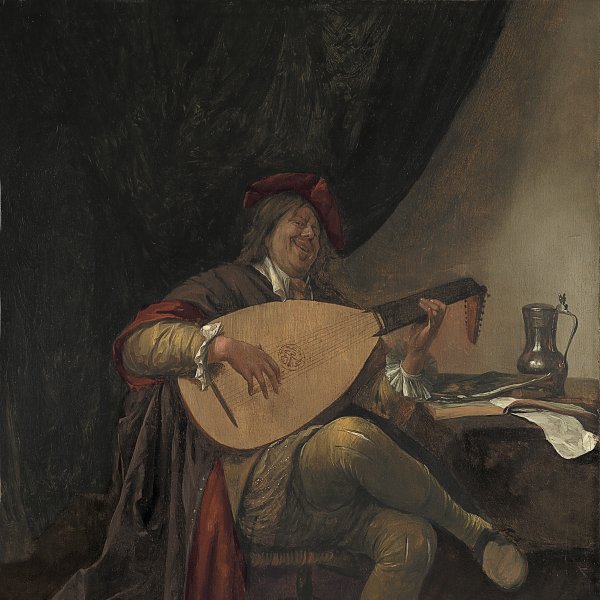Jan Havicksz. Steen
Steen was a Dutch painter who was most appreciated in the 18th century for his genre paintings and scenes of everyday life. Son of a brewer, he studied at Leiden University where he is registered in 1646. Two years later he belonged to the painters’ guild in his native city. He married Margaretha van Goyen in The Hague in 1649, one of the daughters of Jan van Goyen. A restless character, Steen moved around and worked in a number of cities. Between 1656 and 1660 he is documented in Warmond, while between 1661 and 1670 he lived in Haarlem and from 1670 until his death in Leiden. Steen was active in fields other than painting: between 1654 and 1657 his father rented him a brewery in Delft, which was not particularly successful while in 1672 he opened an inn in Leiden. Steen was president of the painters’ guild of that city on two occasions and dean on one.
His first compositions date from the 1640s and include figures of a grotesque type. Among the artists considered to have influenced his work are Adriaen van Ostade in Haarlem, Jan van Goyen in The Hague, and Nicolaus Knüpfer in Utrecht. Steen admired Frans Hals, whose works profoundly impressed him, and he seems to have owned various examples. Furthermore, in two paintings by Steen, The Baptism (Gemäldegalerie, Berlin) and The Doctor’s Visit (Apsley House, London), Hals’ Peeckelhaering is to be seen hanging on the wall. Steen’s style evolved towards works with fewer, more individualised figures. In his last paintings the figures become more elegant, the colours more subtle and the compositions reflect the changes in taste in Dutch art during the last quarter of the century. Jan Steen was a highly prolific artist and in addition to his animated scenes with figures set indoors or outdoors, he also painted allegorical and religious works along with a number of commissioned portraits. Notable within his oeuvre are his religious narratives (Steen was a loyal Catholic throughout his life), treated in the manner of genre scenes, such as Christ at Emmaus (Rijksmuseum, Amsterdam). Steen was admired by Joshua Reynolds and had numerous followers and imitators but no direct pupils.





